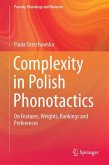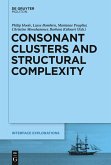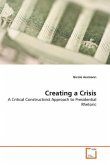This volume presents an Optimality-Theoretic (OT) analysis of the role of the syllable in Spanish phonology. The explanatory power of the syllable has earned it a central role in phonological theory, and this distinction has followed it into Optimality Theory. Chapter 1 divides simple and complex onsets and codas into well formed, ill formed, and unclear/marginal cases. Chapter 2 presents an OT analysis of syllabification. Chapter 3 demonstrates how not only the need for phonological repairs, but the specific repair strategies employed and even the variable application of some repairs follow from constraint interactions. Chapter 4 examines such ONSET-motivated phenomena as vowel merger and diphthong formation, discusses the possibility of ONSET-motivated epenthesis, and presents a comprehensive analysis of the underlying status of glides. Chapter 5 presents an analysis of coda phenomena, including several patterns of /s/ and nasal debuccalization with varying degrees of opacity, place assimilation by nasals and laterals, and 'depalatalization.' Chapter 6 concludes with a novel OT analysis of plural formation that obviates the need for the concatenation of a plural morpheme.







